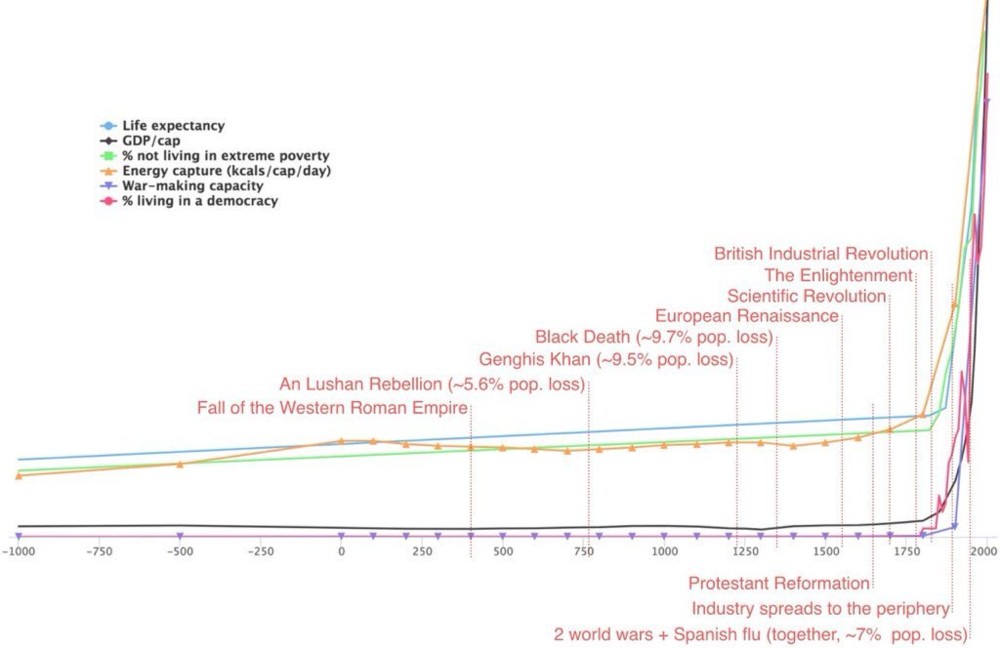My go-to guy for creature postings, which I like to do on Friday, is Steve Stewart-Williams, and he has recently tweeted about plenty of impressive creaturely behaviour. There’s this shark, jumping out of the sea. There’s this butterfly pretending to be leaves. There are fishes doing social distancing. There are lions and hyenas having a dust up, although the interesting thing to me about this is how little actual damage they seem to be doing to each other. There are donkeys, one of them a bit cleverer. And much else besides of a creature-related sort.
But honestly, the recent SS-W tweet that I want to pick out is the one with this graphic, which identifies one of the most important moments in all of human history:
If that graph, or another like it, is not entirely familiar to you, then it damn well should be. It pinpoints the moment when our own species started seriously looking after its own creature comforts. This was, you might say, the moment when most of us stopped being treated little better than farm animals, and we began turning ourselves into each others’ pets.
Patrick Crozier and I will be speaking about this amazing moment in the history of the human animal in our next recorded conversation. That will, if the conversation happens as we hope and the recording works as we hope, find its way to here.


I wonder how they are measuring “war-making” capacity?
Maybe you measure it by how enemy warriors the average warrior can kill in a given time? How much more killing you can do with a day of the average wage to pay the bills? Don’t know.
And I rather glossed over that particular graph. Not exactly creature comfort, is it? But if Steven Pinker is right, even deaths by war, despite everything, have gone down, at least as a percentage of total population, especially since the end of WW2, the last big one. Which could all change of course, but fingers crossed and hope not to die.